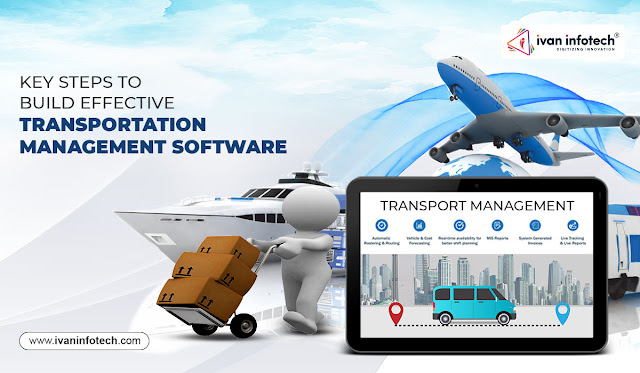Key Steps To Build Effective Transportation Management Software
TMSs are basically configured to empower and manage shipping and logistics processes all through the supply chain. The stakeholders, namely, shippers, fleet owners, logistics service vendors can take full advantage of the visibility offered by TMS.
Transportation Management Software Development- The main steps
Assess business necessities and control expectations
Prior to developing your TMS solutions, examine your business goals, current processes, and employee requirements thoroughly. Frequently you may want to settle for out-of-the-box TMS solutions that are offered in the market. But these will most often not align with your specific requirements. As a result, you would need to narrow down on the particular modules or features for your TMS once you have assessed your current goals, employee needs, existing logistics operations, and so on.
Select a reputable vendor for TMS software development
From the start, it is vital to partner with an experienced and reputable transportation software development company that is able to build your preferred solution. Moreover, when selecting a provider ensure that they will be able to offer scalability, security, system architecture design, and integration.
Decide the Functionality or System Modules
Subsequent to outlining your transportation software development vendor, development approach, and deployment strategy, you would have to settle on which particular modules you would want included in your TMS.
Some of the go-to modules included in TMS are freight management, asset management, integration with CRM solutions, WMS and SCM system, inventory control, reporting & analytics.
Settle upon cloud delivery or on-premise software
Today’s software providers give shipping & logistics businesses a choice between on-premise or cloud software alternatives. Accordingly, you would have to evaluate your needs and choose the deployment option that would work in your favor.
In terms of on-premise TMS, you would most likely have to make added investments for system security and infrastructure. Many businesses prefer cloud-driven TMS as it allows you to invest on a usage basis and smoothly scale up or down according to your business needs.
Carry on exhaustive system testing
After you are done with the transportation software development phase, your TMS would need thorough testing in real-world scenarios to identify any functional errors or bugs. This further gives you the possibility to assess system performance as well as confirm that it is optimized to your current processes or systems. Often used testing tactics include regression testing, installation testing, unit testing, integration testing, acceptance testing
Deploy and launch your product
Lastly, at this phase, your system is all set for deployment once it receives the green light from the QA department. You would need to arrange training courses and workshops for your logistics team to allow them to gain familiarity with the TMS system. Additionally, you can request your vendor for FAQs, user manuals, training videos, and other important guides to ease the learning curve for the new system.
TMS has come into play in order to bring in automation of the data flow among everyone involved in a shipping & logistics company and to facilitate streamlined decisions. It serves to bring transparency to the supply chain system, minimize miscommunication, and ensure that all stakeholders like shippers and carriers are on the same page. Even small to mid-sized businesses are choosing transportation software development to gain a TMS that allows them to run their business at peak levels.



Wonderful and very helpful blog!!! Keep Sharing
ReplyDeleteFretron is the TMS Software provider as it has additional benefits in the form of faster deployments, fewer hours needed for training and installation, automatic updates with the latest features, and improved security.